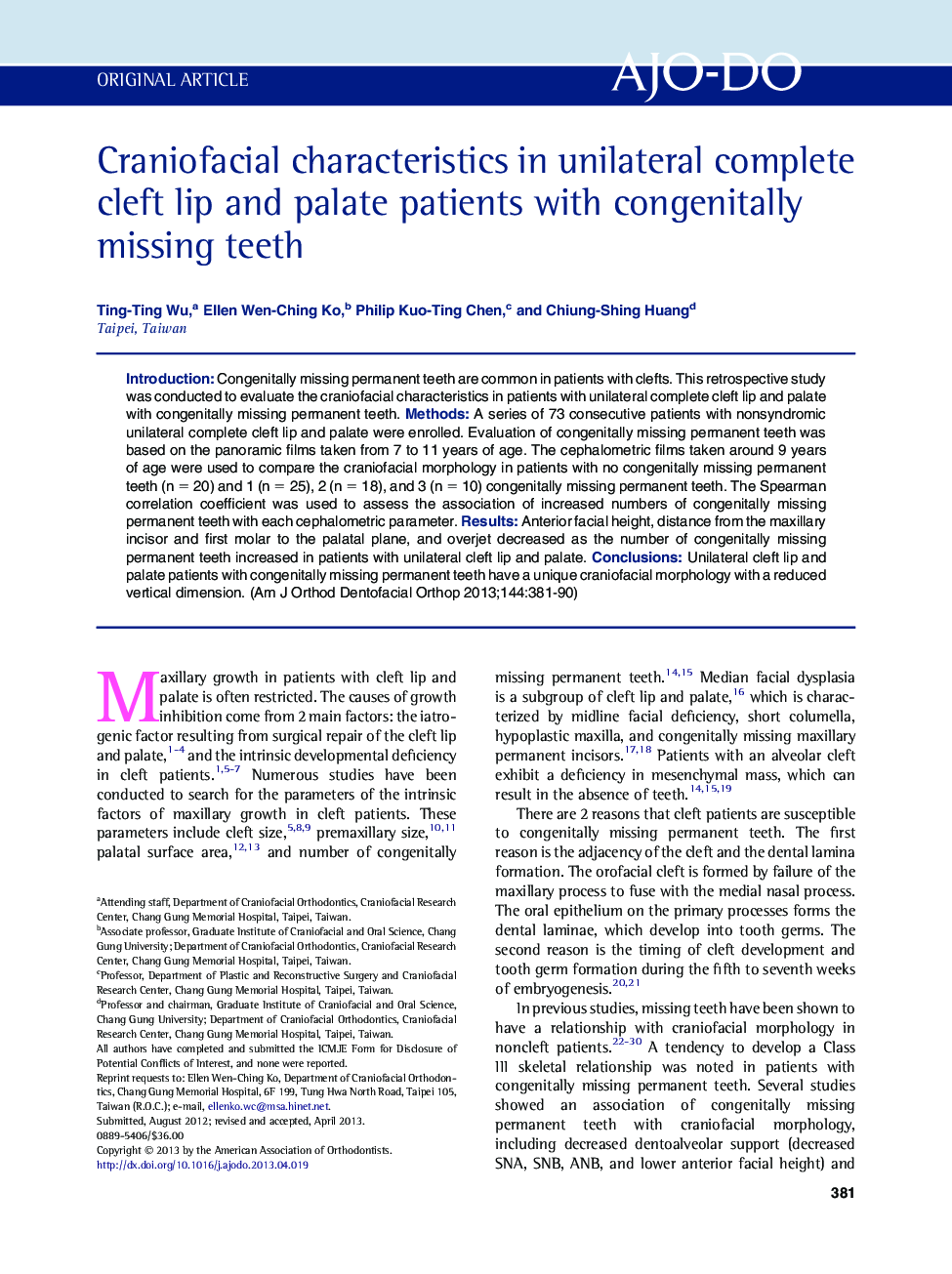| Article ID | Journal | Published Year | Pages | File Type |
|---|---|---|---|---|
| 3117044 | American Journal of Orthodontics and Dentofacial Orthopedics | 2013 | 10 Pages |
IntroductionCongenitally missing permanent teeth are common in patients with clefts. This retrospective study was conducted to evaluate the craniofacial characteristics in patients with unilateral complete cleft lip and palate with congenitally missing permanent teeth.MethodsA series of 73 consecutive patients with nonsyndromic unilateral complete cleft lip and palate were enrolled. Evaluation of congenitally missing permanent teeth was based on the panoramic films taken from 7 to 11 years of age. The cephalometric films taken around 9 years of age were used to compare the craniofacial morphology in patients with no congenitally missing permanent teeth (n = 20) and 1 (n = 25), 2 (n = 18), and 3 (n = 10) congenitally missing permanent teeth. The Spearman correlation coefficient was used to assess the association of increased numbers of congenitally missing permanent teeth with each cephalometric parameter.ResultsAnterior facial height, distance from the maxillary incisor and first molar to the palatal plane, and overjet decreased as the number of congenitally missing permanent teeth increased in patients with unilateral cleft lip and palate.ConclusionsUnilateral cleft lip and palate patients with congenitally missing permanent teeth have a unique craniofacial morphology with a reduced vertical dimension.
